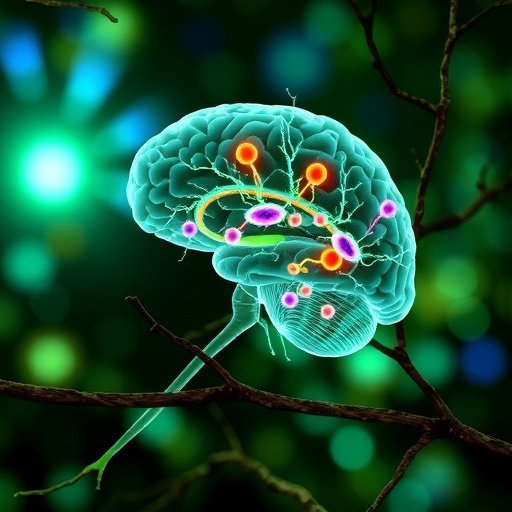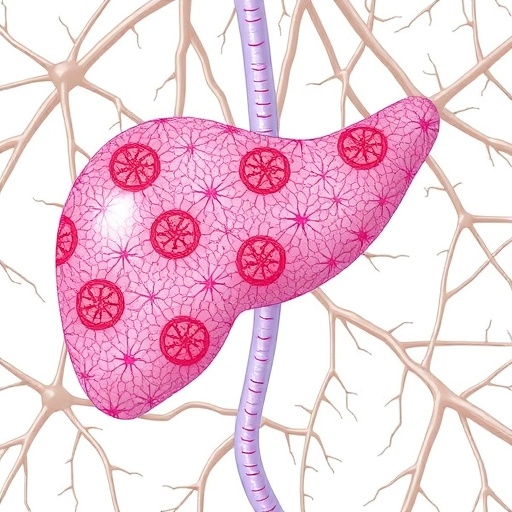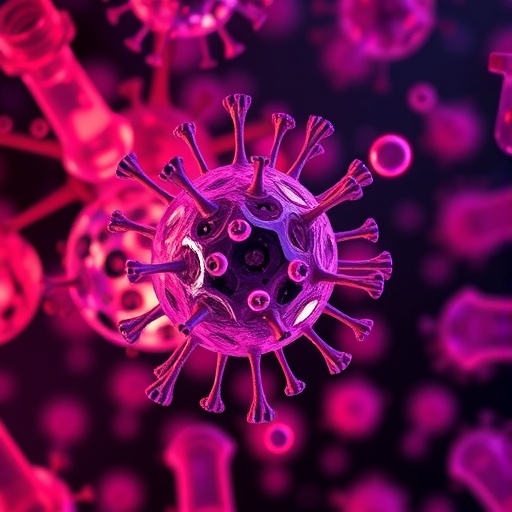In a groundbreaking interview published in the August 2025 issue of Brain Medicine, Professor Alexei Verkhratsky, an eminent neuroscientist from The University of Manchester, UK, challenges long-standing dogmas in neuroscience by spotlighting neuroglia as dynamic and essential players in brain function. His pioneering work dismantles the traditional neuron-centric view and proposes that neuroglial cells are not mere supportive elements but active regulators of neural signaling and homeostasis. This paradigm shift not only broadens our understanding of brain physiology but also opens new therapeutic avenues for a range of neurological diseases.
Verkhratsky’s scientific journey is as remarkable as his discoveries. Beginning his career in the late 1970s at Soviet-era Kiev, he was immersed in the nascent field of electrophysiology, collaborating with some of the luminaries who later received Nobel acclaim for their patch-clamp techniques. These early experiences laid a solid electrophysiological foundation, but his intellectual trajectory took a transformative turn in 1989 when Helmut Kettenmann introduced him to neuroglial research during his time in Heidelberg. This encounter catalyzed a redefinition of his scientific focus toward the complex roles of glial cells.
Central to Verkhratsky’s breakthroughs is the revelation of intracellular excitability in neuroglia, a stark contrast to the well-characterized electrical excitability of neurons. Unlike neurons, which rely on plasma membrane-driven action potentials, glial cells exhibit intracellular signaling governed by intricate spatiotemporal dynamics of ions and second messengers such as calcium and sodium. His landmark 1990 publication detailed the presence of voltage-gated calcium channels in oligodendrocyte precursors—cells capable of generating action potential-like phenomena despite their non-neuronal identity. Further advancing this concept, Verkhratsky proposed astrocytic sodium signaling as a rapid, homeostatic response mechanism, translating neuronal activity into astrocytic modulation, thus highlighting glia’s role in maintaining brain equilibrium.
This conceptual revolution carries profound therapeutic implications. Targeting neuroglial ion channels and second messenger pathways offers a novel strategy to restore cerebral homeostasis altered in various neuropathologies. Such an approach differs fundamentally from neuron-focused interventions by potentially preventing or mitigating secondary damage cascades that follow brain injuries and neurodegenerative processes. The prospect of modulating glial function introduces new hope for conditions long considered intractable, including stroke, chronic pain syndromes, and dementia.
Verkhratsky’s interest in broadening the therapeutic landscape includes exploring traditional Chinese medicine (TCM) compounds for their ability to support neuroglial homeostasis. This integrative approach embodies a cross-cultural scientific philosophy that values diverse medical traditions and innovation. Identifying bioactive agents within TCM that potentiate glial functions could accelerate the development of widely accessible, safe, and effective brain therapeutics that complement cutting-edge biomedical research.
An internationalist by philosophy, Verkhratsky’s collaborative network spans the globe. His sustained partnerships with researchers at Kyushu University in Japan have enriched his electrophysiological and molecular insights. Collaborations with Canadian scientists introduced him to the multifaceted roles of microglia, the brain’s resident immune cells, while Chinese colleagues have illuminated complex interactions between oligodendrocytes, microglia, and astrocytes within pathological frameworks. Such global cooperation facilitates holistic understanding, merging distinct scientific traditions and methodologies to unravel the multifarious nature of neuroglia.
Moreover, Verkhratsky’s research breadth is notable for its refusal to be confined to narrow domains. His laboratory concurrently investigates neuropsychiatric disorders, brain trauma, autoimmune diseases, stroke, and chronic pain. This intellectual omnivory reveals surprising mechanistic overlaps; for instance, pathophysiological patterns identified in stroke models have informed psychiatric disorder research, while chronic pain studies shed light on pathologies underlying dementia. This synthesis of knowledge embodies the complexity and interconnectedness of brain diseases.
A towering achievement in Verkhratsky’s career is the publication of a comprehensive 730-page reference book on neuroglia in 2023, co-authored with Arthur Butt. This exhaustive tome chronicles the evolution of neuroglial research from early historical observations to cutting-edge experimental findings and clinical implications. It serves as an indispensable resource for emerging and established neuroscientists, encapsulating the state-of-the-art knowledge required to propel the field forward. The book exists in multiple languages, including a first-of-its-kind Chinese edition, reflecting the international scope of neuroglial investigation.
Recognition from prestigious scientific academies attests to Verkhratsky’s monumental influence. His election to the German National Academy of Sciences Leopoldina, Academia Europaea, and numerous other European academies underscores the transformative nature of his contributions. With over 600 scientific publications, his prolific output continuously reshapes fundamental neuroscience concepts, placing neuroglia at the heart of brain function and dysfunction paradigms.
Despite his theoretical and academic achievements, Verkhratsky maintains a clear-eyed focus on translational impact. He asserts that “knowing pathophysiology makes finding the cure a technical issue,” emphasizing a pragmatic approach that harnesses mechanistic understanding to drive therapeutic innovation. His diversified research portfolio reflects this ethos, assembling puzzle pieces from multiple disease models to inform comprehensive, glia-targeted treatment strategies aimed at restoring brain health globally.
This enlightening interview is part of Genomic Press’s “Innovators & Ideas” series, which spotlights pioneering scientists who redefine their disciplines. By blending profound scientific insights with personal reflections, the series invites readers into the intellectual and human journeys behind groundbreaking discoveries. Professor Verkhratsky’s story serves as a vivid testament to how perseverance, curiosity, and cross-disciplinary collaboration can revolutionize entire fields and offer hope for devastating neurological illnesses.
Brain Medicine (ISSN: 2997-2639 online; 2997-2647 print), the journal publishing this interview, represents a bold frontier for neuroscience research. As a peer-reviewed platform dedicated to bridging fundamental discoveries and clinical applications, it emphasizes translational innovation across all brain disorders and clinical disciplines. The journal’s open access ethos ensures that pioneering research such as Verkhratsky’s is freely available to catalyze progress in neuroscience worldwide.
Subject of Research: People
Article Title: Alexei Verkhratsky: From neuroglial pathophysiology to therapeutic strategies for brain disorders
News Publication Date: 26-Aug-2025
Web References:
https://doi.org/10.61373/bm025k.0101
References:
A. Verkhratsky, B. Li, S. Duan, Y. Tang & A. Butt, eds, 2023: 神经胶质细胞 [The Textbook of Glial Cells, in Chinese], The People’s Medical Publishing House, ISBN: 978-7-117-34321-3
Image Credits: Alexei Verkhratsky
Keywords: neuroglia, neuroscience, brain function, intracellular excitability, astrocytes, oligodendrocytes, glial atrophy, neurodegeneration, electrophysiology, neurological therapeutics, neuroinflammation, brain homeostasis
Tags: Alexei Verkhratsky researchbrain physiology and homeostasiselectric signaling in neurogliaelectrophysiology in neuroscienceglial cells regulationhistorical impact of neuroglial researchintracellular excitability in glial cellsneuroglia functionneuroglial cells in neuroscienceneurological disease treatmentparadigm shift in neurosciencetherapeutic approaches for brain disorders





